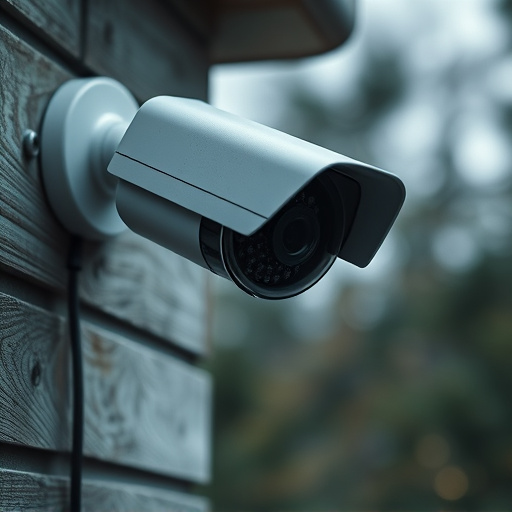Strategically place dummy security cameras at high-visibility front entrances, windows, and gates for maximum deterrent effect. Plan cable routes behind walls or under floors for a realistic simulation. Avoid common pitfalls by discreetly placing cameras and integrating authentic-looking simulated wiring. Mimic genuine security setups with corner or perimeter placement for effective deterrence without high costs. Use weatherproof housing for outdoor installations and maintain realism through regular cleaning and adjustments.
Deter criminals and enhance security without breaking the bank with fake security cameras—a cost-effective alternative to real surveillance equipment. This comprehensive guide explores the art of positioning dummy cameras in strategic locations, such as entry points, parking lots, and outdoor areas. We provide a detailed step-by-step process for simulating wiring, ensuring a realistic appearance. Learn about the benefits of these fake cameras across various settings and essential tips to avoid common installation mistakes. Discover best practices to maintain their effectiveness.
- Choosing the Perfect Spot for Your Dummy Camera
- Simulating Wiring: A Step-by-Step Guide
- Benefits of Using Fake Cameras in Different Areas
- Common Mistakes to Avoid During Installation
- Best Practices for Maintaining Realistic Appearance
Choosing the Perfect Spot for Your Dummy Camera
When selecting the best locations for a fake security camera, or dummy camera, consider areas that offer both high visibility and strategic angles. Front entrances, windows, and gates are ideal spots as they provide clear lines of sight, deterring potential intruders. Place the simulated camera at eye level or slightly elevated to mimic actual surveillance, making it appear as though someone is always watching.
Additionally, look for locations with easy access to power sources for the dummy camera’s wiring. Simulating a real security system involves discreetly running cables, so choose places where you can hide the ‘wiring’ behind walls, fences, or landscaping without drawing attention. This strategic placement ensures an authentic appearance while maintaining the element of surprise that fake cameras offer.
Simulating Wiring: A Step-by-Step Guide
To create a realistic simulation of wiring for your fake security camera, follow this step-by-step guide:
1. Choose Your Best Locations: The first step is to select the best locations for your dummy security cameras. Typically, entry points like doors and windows, as well as high-value areas within your property, are ideal spots. This placement mimics real security camera installations, enhancing the realism of your setup.
2. Plan Your Wiring Route: Once you’ve chosen your locations, map out the route for your simulated wiring. Ensure it looks logical and follows common cable paths. You can use thin, flexible cables to represent power and data connections, positioning them neatly behind walls or under floors to mimic real wiring. Remember, the more intricate and realistic your wiring appears, the more convincing your fake security camera setup will be.
Benefits of Using Fake Cameras in Different Areas
Using fake security cameras, or dummy cameras as they’re often called, offers a range of benefits across various settings. In residential areas, these can act as a powerful deterrent to potential burglars, giving homeowners a sense of security without the need for costly and invasive real camera systems. They are particularly useful for vacant properties, providing a visual safeguard against trespassing or vandalism.
In commercial spaces like businesses, offices, and retail stores, fake cameras are an excellent way to enhance overall safety measures. Best locations for dummy security cameras include entry points, parking lots, and high-value asset areas. Their strategic placement can discourage criminal activity and provide valuable time in case of an actual emergency, allowing staff or authorities to respond swiftly. This cost-effective solution is ideal for businesses looking to improve their security without breaking the bank.
Common Mistakes to Avoid During Installation
When setting up fake security cameras with simulated wiring, it’s crucial to avoid common pitfalls that can undermine the effectiveness of your setup. One major mistake is placing the dummy cameras in obvious or easily accessible locations. While they should deter potential intruders, positioning them in plain sight may alert would-be thieves that no real surveillance system exists. Instead, opt for discreet best locations for dummy security cameras—high up on walls, behind furniture, or in corners where they blend into the environment.
Another error is neglecting to integrate the simulated wiring realistically. Inadequate mimicry can make your fake setup look phony, reducing its deterrent value. Pay meticulous attention to detail when running simulated cables. Follow actual wiring routes and use materials that closely resemble authentic electrical cords. This ensures a convincing presentation that reinforces the illusion of a fully functional security system.
Best Practices for Maintaining Realistic Appearance
To ensure your fake security camera with simulated wiring maintains a realistic appearance, place it strategically in areas that mimic genuine security setup. The best locations are often near entrances, exits, and high-value assets, just like real cameras. Positioning them at corners or along perimeters can create an effective deterrent without breaking the bank.
Additionally, consider environmental factors. Mounting dummy cameras outdoors requires weatherproof housing, while indoor setups should blend seamlessly with existing decor. Regular cleaning and occasional adjustments can keep these mockups convincing over time, serving as a cost-effective alternative to professional security without compromising on visual realism.
A fake security camera with simulated wiring offers a practical and cost-effective solution for enhancing home or business security, especially in areas where real cameras might be less visible. By strategically placing these dummy cameras at the best locations—like entry points, parking lots, and high-value asset areas—you can deter potential intruders and create the illusion of a well-guarded environment. With proper installation, maintenance, and attention to detail, fake security cameras can serve as an effective deterrent without breaking the bank. Remember, while they mimic real functionality, these devices should be treated as decoys, ensuring you maintain their realistic appearance for maximum impact.
